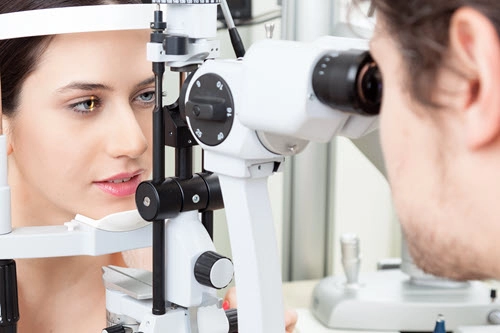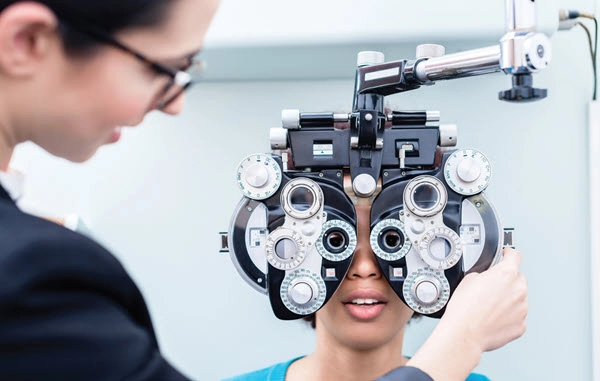Collect for Your Post-Cataract Contacts, Glasses Every Time
Hint: It’s important to know whether your patient has gotten free glasses following prior procedures. Although you may think ophthalmic exams and surgeries are the bread and butter of your practice — and of codes billed to Medicare in general — the reality is that supplies (typically reported with HCPCS Level II codes) bring in a substantial amount of money from Medicare as well. Not only are you missing out by failing to report supply codes properly, but you could also be losing money if you don’t submit claims with these codes, since you are paying for the supplies you dispense, and you deserve to be reimbursed for them. In most situations, Medicare does not cover eyeglass frames, lenses, or contact lenses. However, following cataract surgery with insertion of an intraocular lens (IOL), Medicare and some other payers will reimburse you for one pair of contact lenses or spectacles — if you know how to report the supplies properly. Check out a few quick best practices to ensure that you bring in the money you deserve for these supplies. Keep the Frequency Guidelines in Mind Before you pinpoint the correct codes to use for your supply billing, remember that insurers do maintain frequency guidelines when paying for glasses or contacts. “One pair of conventional eyeglasses or conventional contact lenses furnished after each cataract surgery with insertion of an IOL is covered,” CMS says in chapter 15 of the Medicare Benefit Policy Manual. Although the CMS policy indicates that patients can get a pair of contacts or glasses after each cataract surgery, some Ophthalmology Coding Alert subscribers have expressed frustration when trying to get a second pair of glasses from their payers after a second eye is addressed surgically. The reason could be that most local coverage determinations (LCDs) have very specific guidelines you must follow if you need to file for a subsequent pair of contacts or glasses after already dispensing them after a prior cataract procedure. For example, CMS updated Policy Article A52499 in October 2020, which states, “If a beneficiary has a cataract extraction with IOL insertion in one eye, subsequently has a cataract extraction with IOL insertion in the other eye, and does not receive eyeglasses or contact lenses between the two surgical procedures, Medicare covers only one pair of eyeglasses or contact lenses after the second surgery.” In addition, the policy notes, “If a beneficiary has a pair of eyeglasses, has a cataract extraction with IOL insertion, and receives only new lenses but not new frames after the surgery, the benefit would not cover new frames at a later date (unless it follows subsequent cataract extraction in the other eye).” Therefore, it’s essential that you check your payer policies before seeking reimbursement for post-surgical glasses or contacts. Know What Documentation to Maintain If you are billing for post-surgical glasses or contacts, it’s important to maintain the appropriate documentation to back up the medical necessity of your claim. Good idea: Make sure to document the following for any post-op cataract care patient who gets glasses from your eye care physician: Understand the Codes to Report Depending on which supply you dispense (contacts or glasses), you’ll select the appropriate HCPCS Level II code (V20xx, V21xx, V22xx, or V23xx) and report them on separate lines for each eye, along with the RT (Right side) and LT (Left side) modifiers. This is particularly important if you dispense the glasses or contacts for one eye after the first cataract surgery and for the second eye after another. Showing the payer that the first supplies were related to the left eye, for instance, and the second set were related to the right eye, could help you cut down on denials for duplicate services, since payers have been known to reject subsequent claims for glasses after a second surgery. In most cases, you’ll bill claims for eyeglasses as follows: In short, if the patient chooses a “deluxe frame” — one that costs more than the DME payment for the standard frame — you can bill the patient for the difference in cost with V2025. Example: Medicare will reimburse $100 for frames, but the patient selects a $150 frame. You would report: Do this: Have the patient sign an advance beneficiary notice (ABN), and append modifier GA (Advance beneficiary notice on file) to code V2025. The payer will reimburse you the $100, and you can balance-bill the $50 to the patient. When Dispensing Add-ons, Look to ABN A Medicare patient is entitled to one standard pair of glasses after each cataract surgery with an IOL implant. If you are not sure if the patient has already used their once-per-surgery eyeglasses benefit, you should ask them to read and sign an ABN, clarifying that they will be responsible for any part of your fee that Medicare does not cover. “ABNs used for non-covered services provide the documented proof that the patient made an informed choice to proceed with the service,” says Carol Pohlig BSN, RN, CPC, ACS, senior coding and education specialist at the Hospital of the University of Pennsylvania. As noted above, this is also important to do even if you know the patient is entitled to the free glasses, but if they opt for glasses with any special features such as deluxe frames or progressive addition lenses (PAL). Best bet: Append modifier GA to the codes for the lenses and frames that you submit to the DMERC carrier. If Medicare denies the claim because its records show that the patient has already received his post-cataract glasses, the patient will be financially responsible for the cost.





